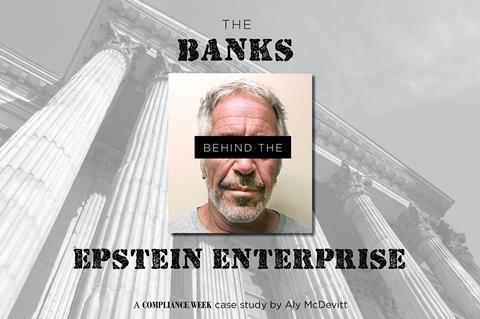- Topics
- Regions
- Events
- Webcasts
- Resources
- CW Exclusives
- Membership

“For tracking litigation, enforcement, and regulatory developments, Compliance Week
should be your prime source.”- Chief Compliance Officer and VP of Legal Affairs, Arrow Electronics
- Home
-
Topics
- Back to parent navigation item
- Topics
- Accounting & Auditing
- AML
- Anti-Bribery
- Anti-Corruption
- Boards & Shareholders
- Cybersecurity
- Data Privacy
- ESG/Social Responsibility
- Ethics & Culture
- Europe
- Financial Services
- GRC Appointments
- Internal Controls
- Regulatory Enforcement
- Regulatory Policy
- Risk Management
- Sanctions
- Surveys & Benchmarking
- Supply Chain
- Technology
- Third Party Risk
- Whistleblowers
- Compensation
- GDPR
- Internal Investigations
- Opinion
- Training
- Culture
- GRC Announcements
- My Compliance Library
- Ask Amii Mailbag
- Nailed It or Failed It
- Risk and Regulatory Compliance
- Accounting and Audit
- Regions
- Events
- Webcasts
- Resources
- CW Exclusives
- Membership
How to Simplify an IRS Examination
By Jaclyn Jaeger2010-11-23T00:00:00
THIS IS MEMBERS-ONLY CONTENT
You are not logged in and do not have access to members-only content.
If you are already a registered user or a member, SIGN IN now.
Related articles
-
 News Brief
News BriefPCAOB fines KPMG units $3.4M, PwC Singapore $1.5M for audit, independence violations
2025-03-14T15:10:00Z By Jeff Dale
Nine affiliates of KPMG agreed to pay a total of nearly $3.4 million for alleged violations of audit and quality control standards, while PwC Singapore will pay $1.5 million to settle separate allegation that the firm manipulated independence compliance reporting.
-
 Opinion
OpinionWhy are CFOs struggling to stay compliant?
2025-03-11T14:37:00Z By Markus Hornburg, CW guest columnist
CFOs are tasked with overseeing an organization’s entire financial processes, not least ensuring that financial operations remain compliant with the multitude of global regulations. It’s a heavy burden to carry that might be alleviated slightly with the help of artificial intelligence, writes Markus Hornburg, head of compliance at Basware.
-
 Premium
PremiumExperts explain why IIA's new global audit rules will be 'central' to securing high-quality assurance
2025-02-28T15:45:00Z By Ruth Prickett
Compliance teams should expect more support from their organization’s internal audit functions. That is the clear message from the Institute of Internal Auditors, the global body of national affiliated internal audit institutes, which has just put into action its new Global Internal Audit Standards.
- Terms and Conditions
- Privacy Policy
- Do Not Sell My Info
- © 2025 Compliance Week
Site powered by Webvision Cloud





